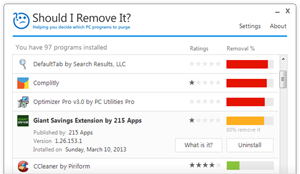Import table
advapi32.dll
SetTokenInformation, ImpersonateLoggedOnUser, CreateProcessAsUserW, RevertToSelf, RegisterServiceCtrlHandlerW, SetServiceStatus, OpenServiceW, DeleteService, OpenSCManagerW, CreateServiceW, CloseServiceHandle, ChangeServiceConfig2W, GetSecurityDescriptorDacl, GetAclInformation, GetLengthSid, InitializeAcl, GetAce, AddAccessAllowedAce, AddAce, InitializeSecurityDescriptor, EqualSid, GetTokenInformation, OpenThreadToken, AllocateAndInitializeSid, OpenProcessToken, SystemFunction041, SetSecurityDescriptorDacl, FreeSid, RegisterServiceCtrlHandlerExW, PrivilegeCheck, GetUserNameW
api-ms-win-service-core-l1-1-1.dll
SetServiceStatus, RegisterServiceCtrlHandlerExW
kernel32.dll
GetProcessHeap, LeaveCriticalSection, EnterCriticalSection, GetModuleHandleW, UnregisterWaitEx, DeleteCriticalSection, SetLastError, HeapAlloc, InitializeCriticalSection, GetQueuedCompletionStatus, TerminateProcess, RegisterWaitForSingleObject, QueueUserWorkItem, SetInformationJobObject, AssignProcessToJobObject, CreateJobObjectW, ResumeThread, GetCurrentProcess, ProcessIdToSessionId, OpenProcess, TerminateJobObject, DisableThreadLibraryCalls, QueryPerformanceCounter, GetTickCount, GetCurrentThreadId, GetCurrentProcessId, GetSystemTimeAsFileTime, UnhandledExceptionFilter, SetUnhandledExceptionFilter, LocalAlloc, LocalFree, HeapFree, ReadProcessMemory, DuplicateHandle, WriteProcessMemory, GetLastError, GetCurrentThread, CloseHandle, CreateIoCompletionPort, InterlockedCompareExchange, Sleep, InterlockedExchange, CreateEventW, UnregisterWait, SetEvent, UpdateProcThreadAttribute, InitializeProcThreadAttributeList, GetCurrentDirectoryW, ResolveDelayLoadedAPI, DelayLoadFailureHook
msvcrt.dll
DllMain
ntdll.dll
RtlInitString, RtlLengthSid, RtlAdjustPrivilege, NtQueryInformationProcess, RtlNtStatusToDosError, RtlInitUnicodeString, RtlSubAuthoritySid, RtlInitializeSid, RtlLengthRequiredSid, RtlCopySid, RtlAllocateAndInitializeSid, RtlSidDominates, RtlFreeSid, RtlQueryEnvironmentVariable, RtlSetEnvironmentVar
rpcrt4.dll
RpcRevertToSelfEx, I_RpcBindingIsClientLocal, RpcServerRegisterIfEx, RpcServerUseProtseqEpW, RpcServerUnregisterIf, RpcImpersonateClient, NdrServerCall2, RpcRaiseException
secur32.dll
LsaFreeReturnBuffer, LsaRegisterLogonProcess, LsaLookupAuthenticationPackage, LsaLogonUser, SeciFreeCallContext, SeciAllocateAndSetIPAddress, LsaDeregisterLogonProcess
user32.dll
LoadStringW, GetUserObjectSecurity, SetUserObjectSecurity
userenv.dll
UnloadUserProfile, DestroyEnvironmentBlock, LoadUserProfileW, CreateEnvironmentBlock
Export table
DllRegisterServer
DllUnregisterServer
SvcEntry_Seclogon
SvchostPushServiceGlobals

